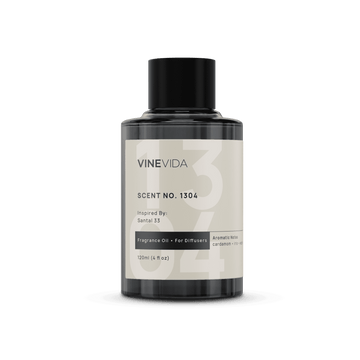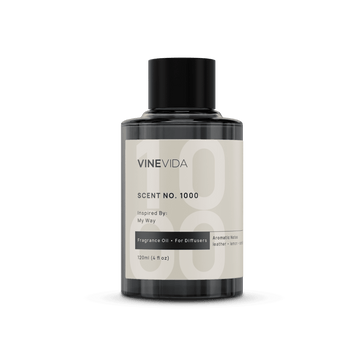“Gua sha” essentially translates to “to scape sand.” It is a modern massage technique in traditional Chinese Medicine, though it is recently gaining worldwide recognition. During a gua sha massage, the therapist will first cover your face or body with oil. Next, they will use a flat stone made of jade or rose quartz and scrape it over your skin, slowly adding more pressure. Gua sha is reputed to help treat migraines and muscle pain, encourage lymphatic drainage, and boost circulation. While scientific and clinical research on gua sha is lacking, there is no doubt it’s one of the following most significant trends. If you’ve already jumped on the bandwagon and are looking for the best oil for gua sha, here are what we consider the top 5!
What is Gua Sha?
Gua Sha is a common practice in Asian cultures and involves scraping with a tool over the skin. The scraping action stretches and releases the connective tissue around tight and tense muscles. Gua Sha can be a stand-alone therapy or used in conjunction with a deep tissue massage. The purpose of Gua Sha is to relax the muscles and surrounding tissues, helping to relieve tension and improve blood flow and lymphatic flow. As the tool is scraped over the skin, the therapist presses down to try to create petechiae. These tiny rash-like red marks are small amounts of bloodletting beneath the skin, encouraging the body’s natural healing processes.
Strictly speaking, the name describes the rash…Sha means “millet.”
Some research says that gua sha may be able to help some forms of inflammation. It is a well-recognized treatment for back pain, especially in the East. (Saha, 2018)
Gua sha is a standard therapy for symptoms of perimenopause in the East. A trial done in 2018 demonstrated impressive support for this. However, the researchers stressed there was still work to be done to establish how much pressure and how frequent the optimum treatment would be. (Ren, 2018)
It has recently gained popularity as a way to help facial skin appearance. Fans of the process say that their skin feels firmer and appears to have fewer wrinkles and fine lines.
The Gua Sha tool is made from crystal, generally either Jade or Rose Quartz, and has smooth curved edges. The curved edges make it easier to move the tool across the skin's surface. Adding a Gua Sha routine to your skincare routine will reap benefits.
Also Read: The Importance of Relaxation
Why Do You Need a Gua Sha Facial Tool and Oil?
Technically you can use the Gua Sha tool alone. However, it can stretch and pull the skin and be uncomfortable. Adding oil provides additional benefits. It helps the tool glide over the skin's surface more efficiently and allows the properties of the oils to penetrate the skin more deeply.
There is a beautiful video here of how to do a gua sha routine. The woman’s beautiful complexion is a testament to the benefits.
The Best Oil for Gua Sha: VINEVIDA’s Top 5 Picks

When it comes to choosing what oil to use for gua sha face and body massage treatments, options are endless. However, depending on your skin type, some may be a better choice than others. Make sure you choose the best for your skin! We will take a closer look at 5 favorites to help you choose the best oil for gua sha.
1. Jojoba Oil
We consider jojoba the best oil for gua sha for multiple reasons. For starters, it’s jam-packed and full of vitamin E. The high level of antioxidants helps prevent sun damage, as well as helps to eliminate free radicals. Free radicals are linked with many chronic diseases, including cancer, and we come in contact with them daily through UV rays and pollution. Furthermore, jojoba oil is hypoallergenic, meaning that, as a general rule, it does not cause allergy or sensitivity. It also acts as a protectant, sealing moisture and helping balance oil production. Jojoba might be the best oil for your skin if you are prone to pimples and breakouts. This leaves your skin full of hydration without building up oils that can clog pores and cause acne or other skin spots. Use jojoba if you suffer from oily or overly sensitive skin.
2. Rosehip Oil
Rosehip is an ingredient in numerous skin care and facial care products—for a good reason. It contains many different vitamins and minerals, and research indicates it can help improve the collagen and elasticity levels in the skin. This can help improve the appearance of wrinkles and fine lines, making skin appear younger and healthier. Like jojoba oil, rosehip also contains vitamin C, which helps combat free radicals. It is also probably the best oil for gua sha in terms of skin appearance, as many people claim it can help reduce visible scarring from acne and stretch marks, as well as brighten and even out skin tone.
Many suggest that Rosehip oil is one of the best face oils for dry skin. The fatty acids in Rosehip oil make it an excellent option for hydrating dry skin and allowing it to absorb deep into the skin's layers. I think if you are wondering what face oil to use for gua sha, this might be your best choice. Take note that rosehip oil does contain vitamin A, though, so take care when using it in combination with other retinol products.
3. Sweet Almond Oil
Another oil containing vitamin A, sweet almond oil is a favorite for massage fans worldwide. In addition to vitamin A, almond oil also contains vitamin E, which, as we now know, is high in antioxidants. Vitamin E is known to help reduce sun damage, and in almond oil, it works in combination with omega-3 fatty acids to protect the skin from further damage. It also works as an intense moisturizer, with many who practice traditional medicine using it to treat inflammatory skin conditions such as psoriasis, rosacea, and eczema.
Sweet Almond might be a little thick on its own, so blend it with grapeseed or jojoba for greasy skins or rosehip, which would be the best face oil for dry skin
4. Grapeseed Oil
Completely aside from the fact it’s made out of the same delicious fruit we all know and love, grapeseed oil is a winner regarding facial oils. If you have sensitive skin and are wondering what oil to use for the gua sha face massage treatment, grapeseed oil is another great choice. It is non-comedogenic, meaning it won’t block pores! Like wine, grapeseed oil contains polyphenols, a powerhouse of antioxidants. Grapeseed oil is reputed to help fight signs of aging, combat breakouts, boost collagen, and prevent further damage.
5. Argan Oil
Surprise! Argan oil isn’t just for hair. Native to Morocco, argan oil contains vitamin E that helps lock in moisture, keeping skin hydrated and glowing. It is also reputed to have the ability to help balance sebum, the oil naturally created by your body. Sebum regulation means skin won’t become overly oily, leading to clogged pores and breakouts. You can also use argan oil on stretch marks to help reduce visible signs of scarring.
6. Tamanu Oil
We would envisage that not everyone will only be interested in a gua sha routine for skin care. Tamanu is a thick oil that would be best used as a small addition to improving an already great blend of grapeseed and sweet almond. Aromatherapists use Tamanu to support healthy immune function and for its anti-inflammatory nature. Tamanu would be a lovely addition for aches and pains or skin conditions. To make it super-doopa, you might also consider some gorgeous sea buckthorn oil.
7. Sea Buckthorn
So thick, it’s almost like carrot syrup, which will color the skin. Use a 5% dilution in your carrier oil blend to calm and soothe muscles and skin.
The Benefits of Using Facial Oils When Doing Gua Sha
Using a Gua Sha should be easy and painless. Facial oil helps the tool glide effortlessly across the skin, reducing friction. Facial oils have many therapeutic properties, so you get the added benefit of the oils and the essential Gua Sha tool.
Also Read: How To Do a Facial Massage
What Should You Look for in a Face Oil for Gua Sha?
Before using a Gua Sha, look at your skin and think about what you want to achieve by using the Gua Sha. Do you want to improve your skin tone? Do you want to reduce the appearance of fine lines and wrinkles? Do you want to boost circulation around the face? Gua Sha can support all of these things. When you take into account your top skincare, it makes choosing the right facial oil easier.
Also Read: Best Essential Oils for Bottom of Feet
How to Use A Gua Sha Facial Tool?
To use your Gua Sha, first, apply your chosen facial oil. Only a couple of drops are required. Then gently massage the skin using steady, upward strokes of your gua sha tool. Make sure you apply light pressure, but not too much. The process should not cause pain in any way—gentle, steady light pressure, and always in an upward motion.
Many beauty therapists suggest using the Gua Sha tool after your skincare routine at night. It will help the skincare products absorb more deeply into your skin, making them more effective.
Also Read: Best Essential Oils For Massage
Can Gua Sha Cause Breakouts?
In short, yes. Sometimes any movement of lymphatic flow and skin agitation can irritate the skin resulting in breakouts. This is normal and a common reaction. However, Gua Sha can help reduce pimples, acne, and other breakouts, so stick to it. It’s all a part of the skin detoxifying, releasing any blockages or oily build-up from the skin. If your skin is red and inflamed from breakouts, it is advised not to use the Gua Sha tool as it can cause further irritation. Try using it once the redness and inflammation have reduced.
Try searching gua sha acne before and after on Google to see some incredible successes people have enjoyed.
Also Read: Five Minute Shoulder Massage
The Best Oil for Gua Sha: Conclusion
There are plenty of great carrier oils to choose from when it comes to gua sha. The best oil for gua sha will depend on the individual, as different oils are better for different skin types.
For sensitive skin, jojoba or grapeseed oil can be great options. If you’re looking to add vitamin A to your skincare routine or want to even out skin tone, rosehip oil might be the better choice. If new to gua sha, we suggest first seeing a professional for treatment.
If you don’t know how much pressure to use, it can lead to bruising or broken capillaries, so an expert best does this facial massage!
Also Read: Aromatherapy Hand Massage Techniques




















